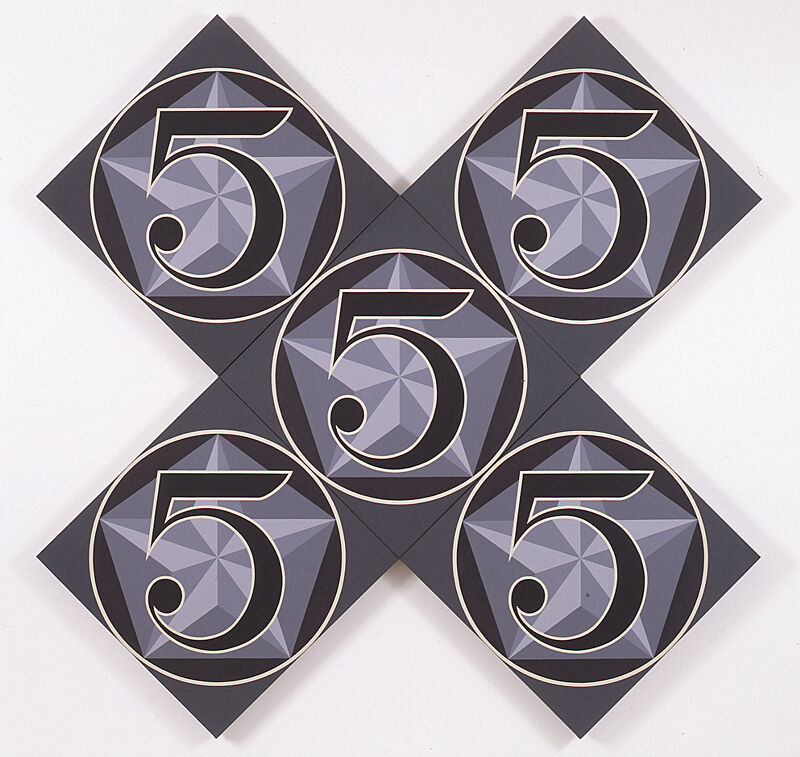Robert Indiana, The X-5, 1963
Explore artistic influences.
Much of the imagery in Robert Indiana's paintings alludes to life in small-town America. He depicts billboards, highway signs, roadside motels, and restaurants. Like many Pop artists of the 1960s, Indiana transforms familiar words, letters, and numbers into large, vibrantly colored icons derived from the emblems of advertising and consumer culture.
Indiana made _The_ X-5 in homage to Charles Demuth's The Figure 5 in Gold, one of his favorite paintings. Compare the two paintings. What are some similarities and differences? What elements of Demuth's painting did Indiana change or keep? Why might he have wanted to recreate Demuth's painting?

